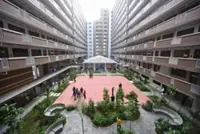The RTS Link's rail viaduct and trestle bridge are now taking shape across the Strait of Johor. - ST
JOHOR BARU: When Chinese developer R&F launched its second phase of sales for the Princess Cove condominium in Johor Baru in 2018, it sold an estimated 30 per cent of its nearly 3,800 apartments by the end of the year.
The company expected sales momentum to continue for the project, which is less than 10 minutes away from the JB checkpoint on foot.
Already a subscriber? Log in
Save 30% OFF The Star Digital Access
Cancel anytime. Ad-free. Unlimited access with perks.





